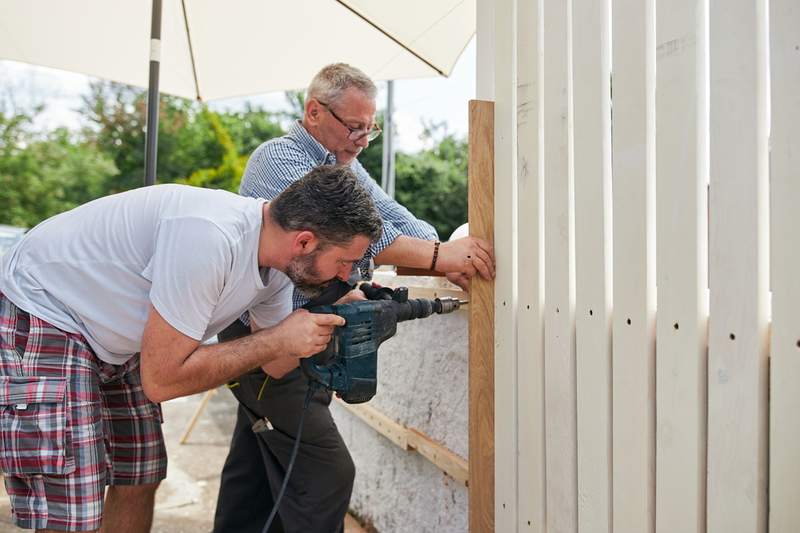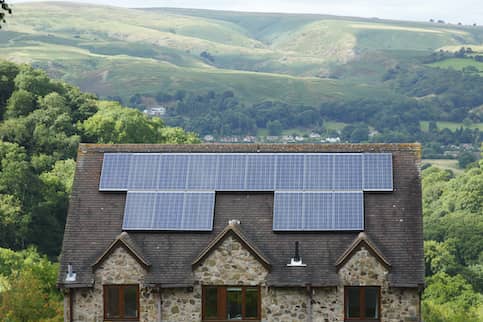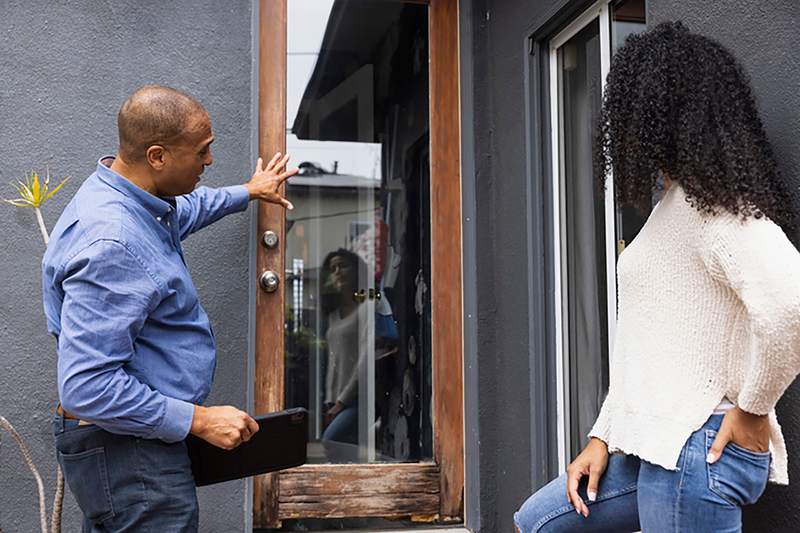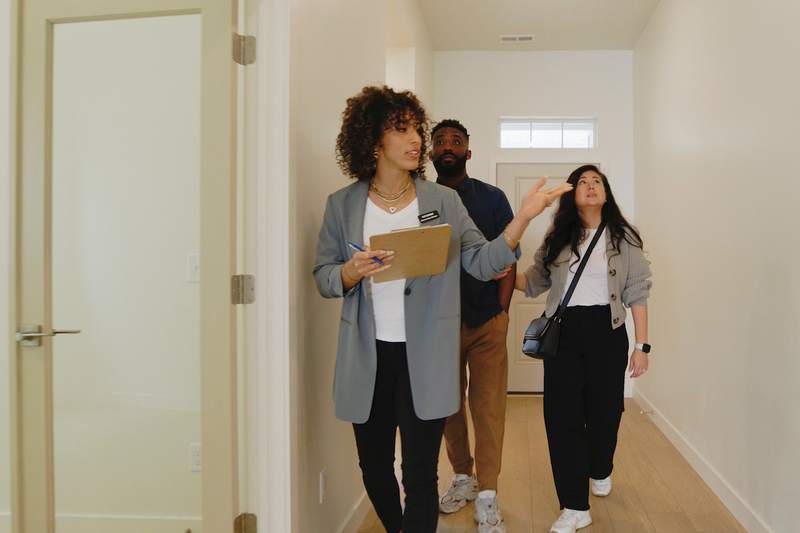When you buy a home, unexpected problems can turn up between making an offer and closing. For example, the home inspection could reveal important repairs are needed, or the home may be appraised for less than expected. One way to resolve such problems without delaying closing is an escrow holdback.
An escrow holdback involves collecting additional funds at closing, typically from the seller. This money is refunded when the problem has been resolved – usually that means when necessary repairs are completed and approved. That way, there’s incentive for the seller to fix the problem to get their money back, and the repairs don’t delay closing.
Key Takeaways:
- An escrow holdback is a way to resolve certain issues that come up during the home buying process without delaying your closing.
- Escrow holdbacks typically require the seller to put down funds to ensure needed repairs are made, at which point their money will be refunded.
- Escrow holdbacks don’t cover all types of repairs and must meet the requirements set by your lender.
What Is An Escrow Holdback Agreement?
First off, let’s define escrow. Escrow is a legal agreement that establishes a third party to collect, hold and disburse funds to ensure a fair and accurate transaction. The escrow account will collect the buyer’s earnest money, down payment and closing costs, as well as their approved financing. Escrow then makes sure all the closing costs are paid, with the remainder going to the seller.
An escrow holdback is when additional funds are collected at closing – usually from the seller – and held until any problems with the transaction are resolved. This most often is done to ensure specific repairs are completed and approved, after which the seller is refunded the holdback amount. A holdback is meant to encourage the seller to make needed repairs in a timely fashion.
What’s Your Goal?
Buy A Home
Discover mortgage options that fit your unique financial needs.

Refinance
Refinance your mortgage to have more money for what matters.
Tap Into Equity
Use your home’s equity and unlock cash to achieve your goals.
How Does An Escrow Holdback Work?
An escrow holdback can be a helpful solution if a home inspection reveals problems with the home that need to be fixed. Ideally, repairs are made before closing, but sometimes they may be delayed due to factors outside of the seller and buyer’s control, such as weather.
Contract Addendum
An escrow holdback agreement is typically an addendum to the original real estate purchase and sale agreement. The addendum is usually drafted by the buyer’s and seller’s real estate agents. It identifies the issues that need to be resolved, then sets a deadline for completing the work – say, within 180 days of closing. If contractors are needed, the addendum will include how much they will be paid. It’s also possible for the seller to handle the repairs themselves to save money.
Review
Both the buyer and seller review the contract addendum and need to sign the agreement. After both parties have signed, it will be sent to the lender for review. Once the loan underwriter has approved the agreement – which may not always happen – the lender will either establish the escrow account themselves or open an account with the title company. If the lender does not approve the escrow holdback, then the repairs will need to be completed before your closing – which could delay your closing date and hold up the sale.
Making Repairs
If repairs are needed, the seller usually has to pay for them. Lenders typically require the amount held back to be more than the estimate for repairs, in case the repairs end up costing more than expected. The seller often needs to deposit an amount equal to 120% of the repair estimate. But if the contractor guarantees a fixed price for repairs, the escrow holdback funds may not need to exceed 100% of the cost. If the seller can’t cover the repairs, the holdback can be funded with proceeds from the sale. The seller will need to have the repairs completed by an agreed-upon deadline.
Final Inspection
A final inspection will be performed after repairs are made to confirm that the work meets expectations. If the inspection verifies that the repairs have been completed within the correct time frame, the funds will be released from the escrow account and refunded to the seller.
“The funds usually get returned to the seller per the terms of the escrow agreement upon successfully completing the conditions in said agreement,” says Claudia Cobreiro, a real estate attorney and Founder of Top Notch Title and Cobreiro Law in Coral Gables, Florida. “Still, most escrow holdback agreements contain a penalty clause allowing the buyer to claim against the escrowed funds if the seller fails to promptly perform the obligations outlined in the agreement.”
Ready To Become A Homeowner?
Get matched with a lender that can help you find the right mortgage.
When Can You Use An Escrow Holdback?
Your lender will ultimately decide whether you can use an escrow holdback. This typically depends on the repairs needed, as well as other guidelines, such as your loan type and state laws. Lenders typically won’t finance a home with health or safety issues, so you won’t be able to use an escrow holdback for those types of larger problems.
Let’s take a look at some of the factors that will affect whether you can use an escrow holdback on your home purchase.
Type Of Repair
Here are some examples of some of the types of repairs that might require an escrow holdback. Note that this is not an exhaustive list, and other types of repairs may also qualify:
- Exterior paint
- Landscaping
- Pest control
- Roof repair
- Deck/patio
- Driveway
- Septic tank
- Sprinklers
- Fence
- Gutters
- Sod
- Walkways
Borrower Loan Type
Your ability to get an escrow holdback also can be affected by your loan type. For example, if your lender intends to sell your loan to Fannie Mae or Freddie Mac, the loan will need to comply with their rules. If the repairs needed are structural, Fannie Mae will require the lender to confirm repairs have been made before it buys your mortgage. If the repairs are not structural or safety-related, Fannie Mae can buy your loan before the work is completed.
Government-backed loans – like FHA and VA loans – must comply with the rules of that government agency. With an FHA loan, the repairs can’t exceed $5,000. If the cost is more than $5,000, you’ll need a separate FHA 203(k) rehabilitation loan to cover the repairs. VA loans require that the escrow holdback contains 150% of the cost of the repairs.
State Laws
States have their own laws regarding property appraisals, which can affect your escrow holdback. Some states require an inspection of the septic tank. In areas prone to specific perils or pests, there may be additional inspections. For example, many Southern states require a termite inspection.
Take The First Step To Buying A Home
Find a lender that will work with your unique financial situation.
Escrow Holdback Pros And Cons
Escrow holdbacks have benefits and drawbacks. Let’s take a look at some of the advantages and downsides of using one.
Pros
Some of the pros of using an escrow holdback are:
- It protects the buyer from having to pay for unexpected repairs.
- It encourages the seller to complete repairs quickly.
- It keeps your schedule on track for closing on your house.
Cons
On the other hand, escrow holdback cons include:
- It doesn’t cover all types of repairs.
- The loan underwriter might not approve it.
- The seller may run into issues completing repairs within the timeline.
The Bottom Line
An escrow holdback can be a useful solution if a home inspection reveals that certain repairs are needed on the property you’re buying. This type of agreement can prevent you from having to delay your closing date and can motivate the seller to complete the repairs quickly. Just keep in mind that this option is not available for all types of repairs, and your lender will need to approve the escrow holdback.
More From Quicken Loans:

Rory Arnold
Rory Arnold is a Los Angeles-based writer who has contributed to a variety of publications, including Quicken Loans, LowerMyBills, Ranker, Earth.com and JerseyDigs. He has also been quoted in The Atlantic. Rory received his Bachelor of Science in Media, Culture and Communication from New York University. He also completed the SoFi/Coursera Fundamentals of Personal Finance Specialization consisting of five courses: Introduction to Personal Finance, Saving Money for the Future, Managing Debt, Fundamentals of Investing, and Risk Management in Personal Finance.












